Boiling water is a simple task that we often take for granted, but what if you find yourself in a situation where you don’t have access to fire or other heat sources? Do you know how to boil water without fire?
You can boil water using solar power, electricity, and geothermal sources. You can also use mechanical energy to get the job done.
In this article, you’ll learn the five different methods of boiling water without fire. You’ll also learn about other alternatives, such as using water filters and purification tablets, so you can have access to safe drinking water even if you can’t boil or heat water.
Quick Navigation
- 5 Easy and Safe Ways To Boil Water Without Fire
- 1. Use Solar Power
- 2. Use Electricity
- 3. Use a Vacuum Flask
- 4. Use Geothermal Resources
- 5. Use Mechanical Energy
- Alternative Methods
- Final Thoughts
5 Easy and Safe Ways To Boil Water Without Fire
While boiling or heating water is typically done over a flame, there are a few alternative methods you can use to make sure you still have safe water to drink and use for cooking. Below is a handy list you can use as a guide.
1. Use Solar Power
This method involves using a solar cooker to harness the energy from the sun to heat water. A solar cooker is a device that uses reflective surfaces to direct sunlight onto a pot or container of water, causing the water to heat up.
This method requires a clear, sunny day and a solar cooker, which can be purchased or made at home.
How to Use a Solar Cooker

To use a solar cooker, you will first need to assemble the cooker according to the manufacturer’s instructions. Once assembled, place a container or pot of water in the cooker, and adjust the reflectors to direct the most sunlight onto the container.
Depending on the size of the solar cooker and if you have enough water being heated, it can take a few hours for the water to reach boiling temperatures.
Some solar cookers come with a thermometer to check the temperature in the pot. Make sure to use an oven mitt when lifting the cooker to avoid any burn.
Advantages and Efficiency
One of the advantages of using solar cookers is that they’re environment friendly. It does not produce any harmful emissions. It doesn’t even consume any fossil fuels.
You can use the boiled water to wash, cook food, or if you need warm water or lukewarm water for a bath or to drink. They are also easy to use and require minimal maintenance.
It’s important to note that the efficiency of solar cookers can be affected by weather conditions. Cloudy days or periods of partial shade will decrease the cooker’s effectiveness, and it may take longer to heat the water.
Additionally, solar cookers are not suitable for use in areas with a consistently overcast climate.
Solar cookers can be an excellent alternative for boiling water in remote or off-grid areas, where access to a traditional heat source may be limited.
They are also great outdoors and a good choice for RV campers, car camping, or other outdoor activities, as they do not produce smoke, gas, or require the use of a flame.
There are different types of solar cookers such as box cookers, panel cookers, and parabolic cookers. Each type has its own advantages and disadvantages.
Box cookers are easy to use, affordable, and can be made at home. Panel cookers, on the other hand, are more efficient and compact, but usually more expensive. Parabolic cookers are the most efficient, but also the most expensive and harder to make.
2. Use Electricity
The second method for boiling water without a fire is to use electricity. This method involves using an electric kettle or immersion heater to heat water, provided that you have access to a power source.
Electric Kettle
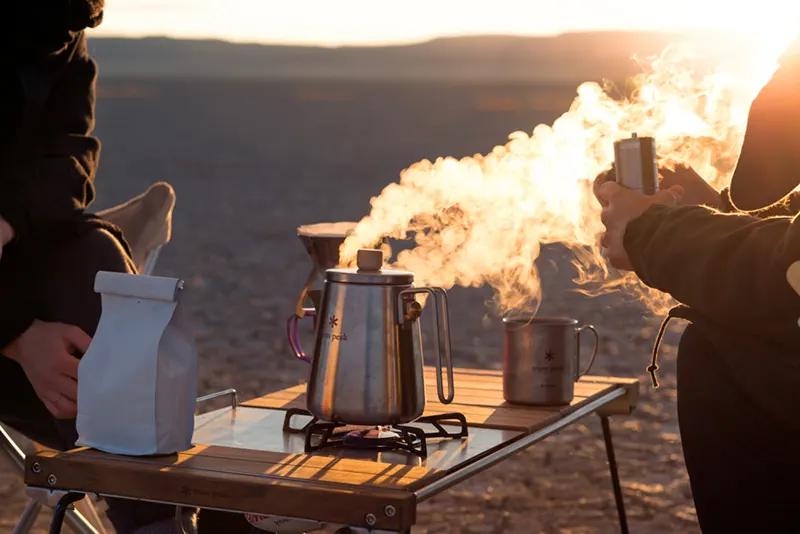
An electric kettle is a device that uses an electric heating element located in the base of the kettle to heat water. Electric kettles come in a variety of sizes, and they typically have a capacity of around 1–2 liters of water.
They work by heating the water to its boiling point, and then automatically shutting off once the water reaches that temperature.
Electric kettles are convenient and easy to use, and they can quickly bring water to a boil. They are also efficient. They typically have a high-wattage heating element that can bring water to a boil relatively quickly.
Immersion Heater
An immersion heater is another electrical device that can be used to heat water. It’s a small rod-like device that can be placed directly into a container of water.
It heats the water by running an electric current through a heating element. The heater is then immersed into the water and switched on, heating the water.
Immersion heaters are more versatile than electric kettles. They can be used with any container of water, and they’re also easy to use and transport. However, they are also less efficient. It takes them more time to heat the water than an electric kettle.
Electric Kettle vs Immersion Heater
Both electric kettles and immersion heaters have the advantage of being able to heat water quickly and efficiently, without the need for fire.
They are also safe to use, as they are equipped with automatic shut-off systems that prevent overheating. Electric kettles and immersion heaters are also widely available and can be purchased at most home appliances or online stores.
The efficiency of both electric kettles and immersion heaters can be affected by the power source. If you’re using a generator or inverter, the efficiency will be lower than if you’re using a standard electrical outlet.
Additionally, you will need access to a power source to use these devices, which may not be available in certain situations or locations.
3. Use a Vacuum Flask

The third method for boiling water without a fire is to use a vacuum flask, also known as a thermos.
A vacuum flask is a type of insulated container that can keep liquids hot, warm, or cold for extended periods of time by minimizing heat transfer between the inside and outside of the flask.
The vacuum flask is made up of two layers of glass or stainless steel, with a vacuum in between them. This vacuum acts as an insulator, minimizing heat transfer from the outside air to the water inside the flask.
How to Use a Vacuum Flask
To use a vacuum flask to boil water, fill it with water then preheat. This can be done by heating the water on a camping stove or with another heat source until it reaches boiling point.
Once the water is boiling, it should be poured into the vacuum flask and the lid should be securely closed. The vacuum flask will keep the water at boiling point for a significant period of time, depending on the quality of the flask and the insulation.
Using a vacuum flask can be a convenient way to keep water hot if you don’t have access to a heat source, especially if you pre-heat the water.
This is useful for situations where you need hot water for drinking or cooking, but you don’t have a gas stove, wood-burning stove, camp stove, or other heat sources available.
Vacuum flasks are not capable of boiling water on their own, but only keep the hot water hot for a longer time. They are not as efficient as other methods for boiling water like electric kettles, pressure cookers, or geothermal.
Additionally, vacuum flasks can be fragile and should be handled with care, and the vacuum insulation can degrade over time, reducing its effectiveness.
4. Use Geothermal Resources
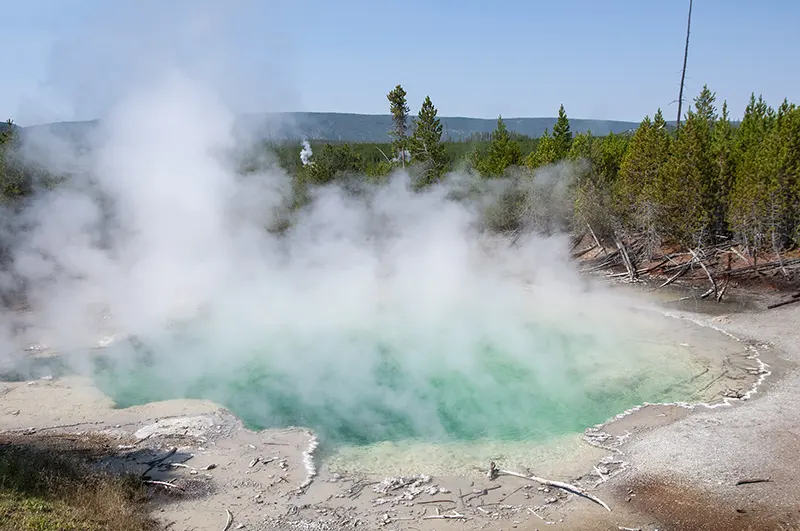
The method of using geothermal energy to boil water is based on tapping into the naturally occurring hot water and steam found in some geothermal areas.
These areas have geothermal reservoirs, which are subterranean layers of water that are heated by the Earth’s crust, producing hot water and steam.
The temperature of this water can range from a few degrees above the boiling point of water to several hundred degrees Celsius.
How to Use Geothermal Energy to Boil Water
First, you need to access this hot water by drilling a well into the geothermal reservoir. The well will bring the hot water and steam to the surface, where it can be captured and used to heat a heat exchanger.
The heat exchanger is a device that transfers the heat from the hot water or steam to a separate fluid, which in this case is water that you want to boil. The heated water is then piped to a storage tank, where it is ready for use.
This method of boiling water can be highly efficient, as it makes use of the naturally occurring heat from the Earth’s crust. It also eliminates the need for any external heat sources, such as hot coals, flames, or electricity.
Additionally, geothermal energy is a renewable and sustainable energy source, as it does not produce any harmful emissions.
However, this method of boiling water is not widely available and depends on the location and the availability of geothermal resources. Not all places have geothermal reservoirs, and even if they do, drilling a well can be an expensive and complex process.
The installation and maintenance of the equipment also require technical knowledge, and this method requires a significant initial investment for the well and heat exchanger.
5. Use Mechanical Energy
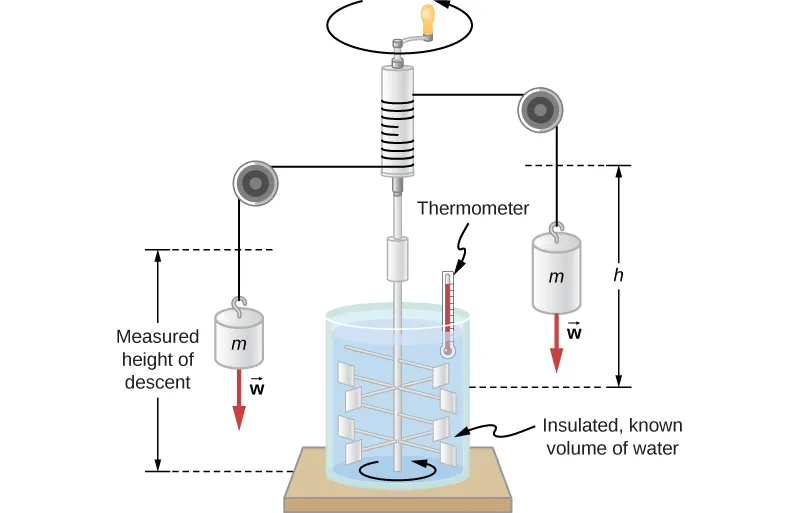
The method of using mechanical energy to boil water involves the use of a mechanical device, such as a hand crank or foot pedal, to spin a rotor that is immersed in the water. The rotor causes friction, which generates heat and causes the water to boil.
This type of device is called a mechanical heat generator, and it’s a manual process that requires a significant amount of effort to operate.
The mechanical heat generator typically consists of a rotor with a spinning shaft, attached to a crank or pedal, that spins when turned by hand or foot.
The rotor is immersed in the water that needs to be boiled, and as it spins, it causes friction between the rotor and the water, generating heat. The water is heated by friction, and over time, it will reach its boiling point.
Advantages and Disadvantages
One of the advantages of using a mechanical heat generator is that it does not require any external energy source, it’s portable and easy to use.
This can be particularly useful in situations where a power source is not available, such as during camping or in an emergency situation.
However, the process of boiling water using a mechanical heat generator is quite laborious, it takes a lot of effort to spin the rotor for extended periods of time.
Additionally, it’s not as efficient as other methods as it requires a lot of physical effort, and the process may take much longer.
The mechanical heat generator also has a relatively low boiling point, and it is not able to bring water to a rolling boil, like other methods like electric kettle, pressure cooker, or geothermal.
Alternative Methods
If you find yourself in a survival or emergency situation and have access to a stream or other body of water, purifying the water is crucial for making it safe to drink. While boiling is one method of purifying water, it may not always be possible.
In such situations, learning how to start a fire and using a water filter or purification tablets can be an effective alternative and extremely helpful if you are an avid camper, hiker, or if you often have adventures outdoors.
Water Filters
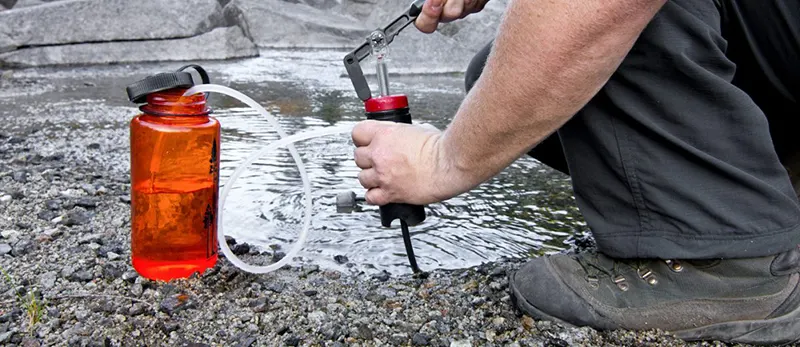
Water filters are devices that physically remove impurities from water, usually by passing it through a porous material such as ceramic or activated carbon.
Water filters come in different sizes and types, from light and handy small portable filters to larger ones that can filter large quantities of water.
They can remove various contaminants such as sediment, bacteria, and even viruses. They are easy to use and effective, but they do require regular cleaning or replacement of the filter elements.
Water Purification Tablets
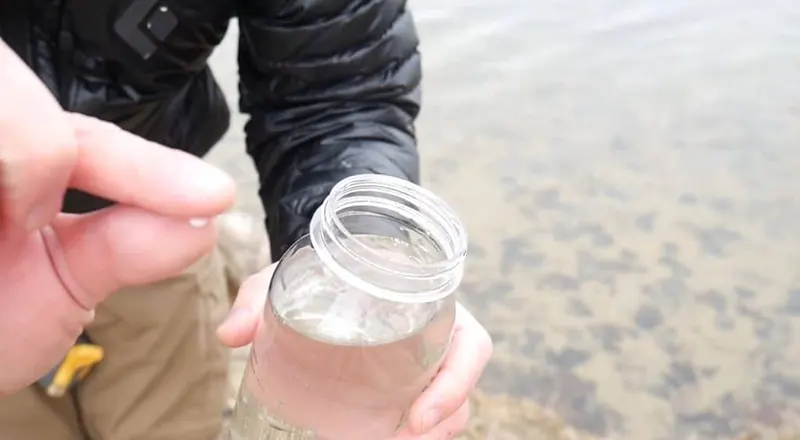
Purification tablets, on the other hand, work by releasing chemicals into the water that kill harmful microorganisms to purify water. These chemicals include chlorine, iodine, and chlorine dioxide.
Purification tablets are also light, handy, and easy to use. Simply drop the tablet into the water and wait for the recommended time for the chemical to take effect before drinking. Some purification tablets can take up to 4 hours to fully disinfect the water.
While both water filters and purification tablets can make water safe to drink, they may not remove all contaminants and impurities. Additionally, both methods have a limited shelf-life, and their effectiveness can be reduced over time.
Learn How to Start Fire
If you don’t have access to fire, why not start one?
You can start a fire by using reflective materials and wood. This method is a bit more complex and requires a bit more knowledge and equipment, but it can be an effective way of boiling water in survival situations.
Step 1
Boiling water using reflective materials and wood involves using a reflective material, such as a shiny metal sheet or a piece of mirror, to direct and focus sunlight onto a small pile of dry kindling.
The concentrated sunlight will heat up the kindling, and eventually, it will cause it to ignite, creating a small fire.
Step 2
Once the fire is established, you can then add larger pieces of wood to keep the fire burning and provide heat to a pot or container of water.
You can use a pot or container that you can hang over the fire, or place on a stand above the fire. As the water heats up, the fire will cause the water to reach boiling point, and it will be ready to use.
It’s important to have good weather conditions and a clear sunny day, to make this method work. Additionally, you need to have reflective material and dry wood readily available, and the ability to start and maintain a fire.
Pros and Cons
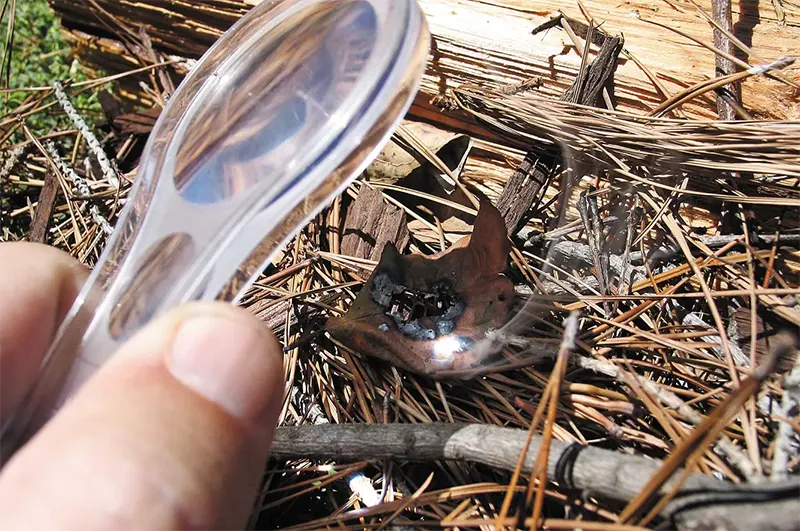
This method can be challenging, but it can be an effective way to boil water in a survival situation, especially if you don’t have access to other heat sources.
It requires some knowledge and skills in starting and maintaining a fire. It’s important to be familiar with the local laws and regulations regarding fire-making, as well as the proper techniques for building and maintaining a fire in the wilderness.
You also need to take safety precautions to ensure that the fire does not spread, and that it’s put out properly.
It’s important to clear away any dry brush or leaves from the area where you want to start the fire. Keep a bucket of water or a shovel nearby to extinguish the fire if it gets out of control.
While this method can work in some cases, it’s not always reliable. The effectiveness can be affected by weather conditions, such as overcast or cloudy days. Plus, it may take a while to gather enough dry kindling and wood to start the fire.
Final Thoughts
Boiling water is an essential task for many reasons, whether it be for cooking or sterilization. However, in the case of an emergency or survival situation, access to a heat source may be limited.
Luckily, there are ways to boil water, such as using solar power, electricity, a vacuum flask, or water purification tablets. With a bit of creativity and resourcefulness, it’s possible to boil water even when a fire is not available.
